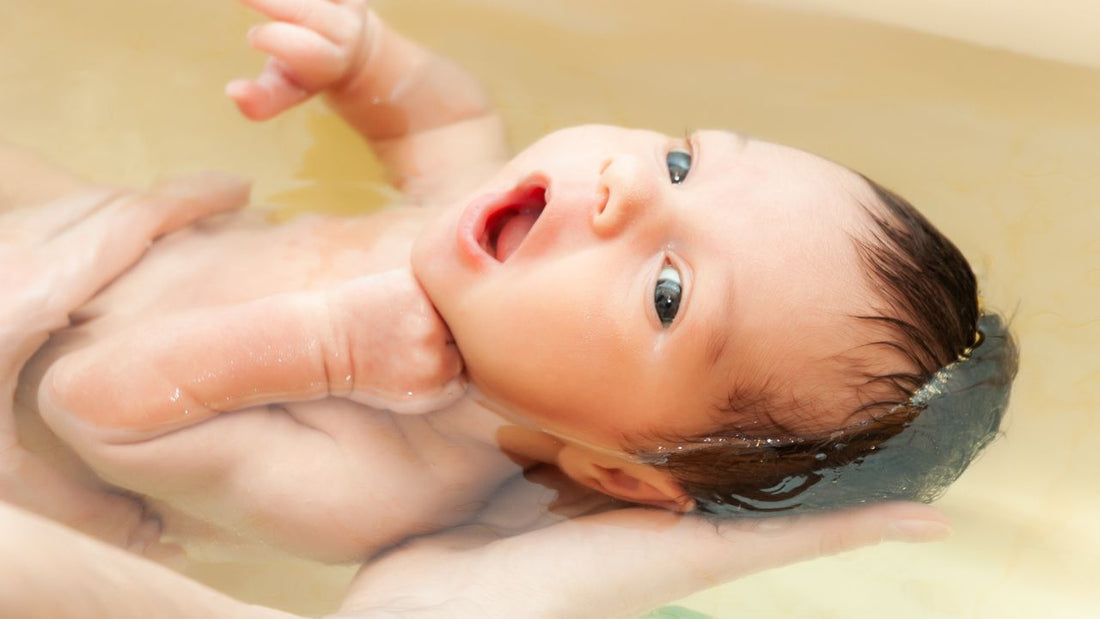BABY BATH: A practical guide on how and when to do it
Bathing a newborn is one of the most special moments for every new parent, but it can often raise doubts: when to do it? How to prepare? Which products to use?
In this article you will find a complete guide to face your baby's first bath with serenity and safety .
From choosing the perfect time to the right cleaning routine, we’ll explore everything you need to know to make bath time a time to relax and connect with your little one.
Discover best practices for caring for your newborn's delicate skin and ensuring a safe and effective hygiene routine.
Ps: check out our Instagram profile @drsilva.com_official for hundreds of videos and useful content.
How to Bathe a Newborn: A Step-by-Step Guide

Bathing a newborn is a delicate and special moment that should not cause stress to either the baby or the parents.
To make this experience a positive one , it is essential that it takes place in a calm and serene environment , at a time of day when parents can concentrate completely on their little one, without distractions.
While there is no "perfect manual" for bathing, there are some simple but effective precautions that can ensure maximum well-being for your newborn during this daily practice.
Baby Bath Tub: Is It Really Necessary?

A baby bath tub is a common choice , but not a must.
There are various models on the market, some with integrated changing tables.
However, it is also possible to bathe your newborn on other surfaces such as the bathroom sink , as long as it is very clean, or in a simple plastic basin , like those used for laundry.
If you don’t have a special baby bath tub (the kind with a reclining back), you’ll need to learn to support your baby’s head and back well with your hand before gently placing him or her in the sink or plastic basin.
If you don't have a bath tub, to increase your baby's comfort and help you support him, you can place a clean towel in the sink and roll it up to act as a support for your baby's back and head during bathing.
In any case, the important thing is to ensure the safety and comfort of the child during bathing to allow him to pleasantly enjoy this moment.
Water temperature and ideal environment
The temperature of the water for bathing a newborn should be around 37°C.
It is possible to measure it with a specific thermometer or do the “elbow test” , as our grandmothers suggested (you immerse your elbow, a sensitive part of our body, in water to test its temperature).
Equally important is to maintain a room temperature of around 23-25°C , avoiding sudden changes in temperature that could bother the child.
Once the temperature is right, you can add bath products, such as soap or bath oil, and then immerse the little one in the water.
Bath products: what to choose for the delicate skin of newborns
It is essential to choose specific products for newborns, free from perfumes and irritating substances .
These must have a physiological pH so as not to be aggressive on the delicate skin of the newborn.
For cleansing, it is preferable to use oily cleansers instead of foaming ones.
For the first few days, avoid using shampoo ; your baby's hair can be washed with the same detergent used for the skin.
How to Bathe a Newborn: The Right Technique

During bathing, the newborn should be held securely , sitting or semi-reclining (semi-reclining is better until the newborn has the necessary tone to support his head well).
To support your baby properly during bathing , pass your hand and arm behind your baby's shoulders , until your hand is under the baby's opposite armpit .
Start by wetting and gently massaging the head , then proceed to wash the face , body , genitals and legs .
To avoid suddenly wetting your baby's eyes and head and scaring him, you can use a muslin/sponge soaked in water and gently squeeze it over your baby's head.
Using the same muslin, cloth or sponge you can also gently dab and wash your baby's face, neck and upper torso.
When you get to the genital region, if you have a baby, be sure to move the testicles to wash the groin area well.
If it is a girl, wash the genitals starting from the front and moving towards the bottom, to avoid contamination by feces and prevent infections, especially of the urinary tract.

